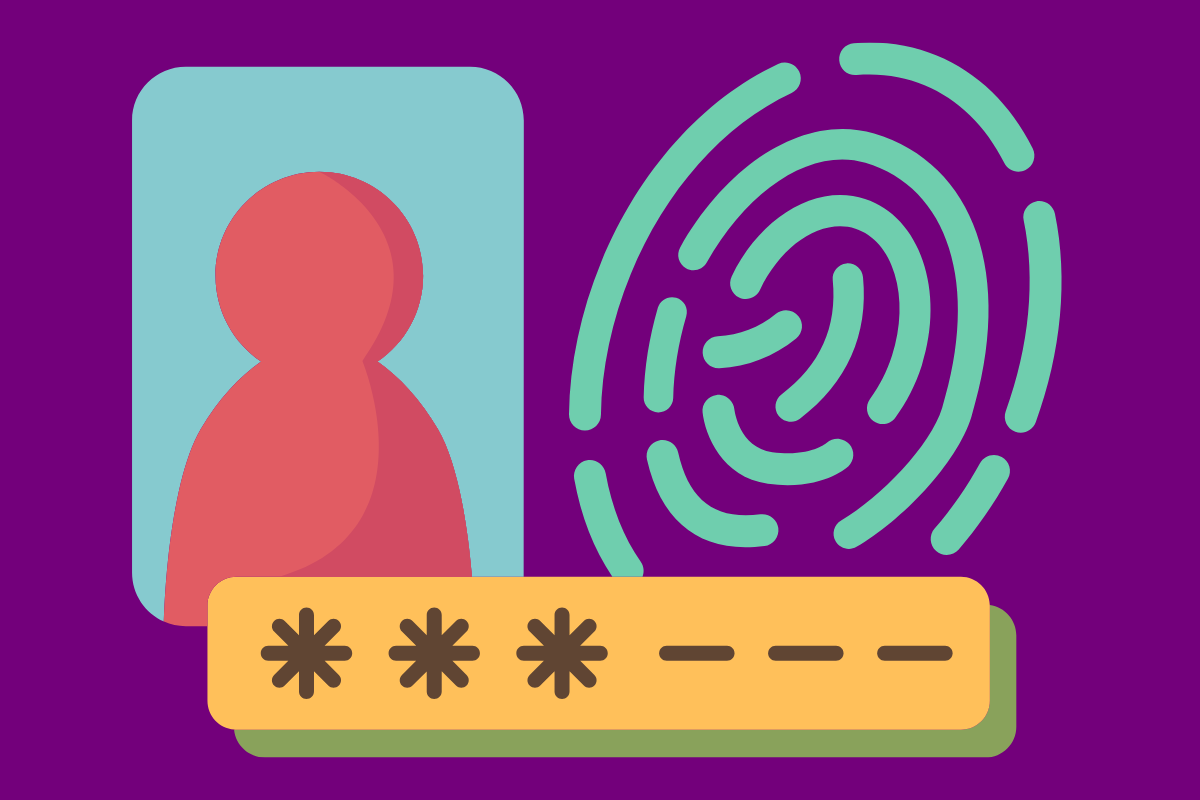Train Minds, Protect Data, Prevent Breaches
Imagine spending hundreds and even thousands of dollars on a cyber security system, only to have a simple human error put your entire law firm at risk.
It’s alarming how easily that can happen through different types of social engineering. The world’s most expensive security system won’t protect you if your assistant clicks the wrong link or installs malicious software. The strongest firewall can’t stop a lawyer from using “Password123” on multiple accounts. No amount of encryption will help if someone holds the door open for a stranger claiming to be from IT.
This is the reality of modern cyber resilience: technology by itself won’t keep you safe, especially with Generative AI making dangers more prevalent. According to Infosecurity Magazine, human error contributes to 95% of all cyber security breaches. The human element remains the weakest link in most security breaches, and law firms are prime targets. Cyber criminals know that legal professionals handle sensitive client and company data, financial information, and confidential communications worth far more than the effort required to exploit a single moment of inattention.
The American Bar Association’s 2023 Legal Technology Survey found that 29% of law firms reported experiencing a security breach. An Arctic Wolf and Above the Law survey found that 39% of respondents reported their firm had experienced a security breach in the past year, and among those breaches, 56% resulted in lost confidential client data. Cyber security awareness at your law office determines whether your other security investments will actually protect you when attacks happen.
The Hidden Costs of Security Ignorance
When most people think about cyber security, they picture hooded hackers typing furiously in dark rooms. The reality is far more mundane and much more dangerous. The biggest threats to your firm walk through your front door every morning: well-meaning staff members who don’t recognize the warning signs of a phishing attack, partners who reuse passwords across personal and professional accounts, and assistants who check their email using public Wi-Fi or assume every caller claiming to be from your bank is legitimate.
Business email compromise attacks target law firms precisely because they exploit employee mistakes rather than technical vulnerabilities. An email that appears to come from a trusted colleague, a document that looks like a legitimate court filing, or a phone call from someone claiming to be IT support can bypass even the strongest technical defences if staff don’t know what to watch for.
More recently, several practice management software providers have disclosed breaches that exposed client intake forms, billing information, and case notes. These incidents highlight a troubling reality: law firms are increasingly dependent on third-party software, but often lack visibility into their vendors’ security practices.
The financial costs of successful attacks are obvious and devastating. According to IBM’s 2024 Cost of a Data Breach Report, the average cost of a breach for professional services firms (including legal, accounting, and consulting) reached $5.08 million. For smaller law firms, the average breach costs $36,000 per incident.
But the hidden costs run deeper: lost client trust, damaged professional reputation, regulatory investigations, and the psychological toll on staff members who realize their mistake enabled a breach. In 2024, the law firm Orrick, Herrington & Sutcliffe paid $8 million to settle a class action lawsuit after a March 2023 data breach exposed the names, addresses, birth dates, and Social Security numbers of over 600,000 people.
Legal and Regulatory Obligations
Under PIPEDA, Canadian law firms have clear obligations when a breach occurs. You must report to the Office of the Privacy Commissioner of Canada any privacy breaches that pose a real risk of harm to an individual “as soon as feasible.” You’re also required to notify affected individuals and relevant third parties of such breaches, and keep records of all breaches for at least two years, regardless of whether they present a real risk of harm.
Failure to comply with these reporting requirements can result in fines of up to $100,000. But the regulatory penalties pale in comparison to the reputational damage and potential malpractice claims that can follow a breach involving client data.
What Real Cyber Security Awareness Looks Like
Building genuine cyber security awareness means transforming how everyone in your firm thinks about digital safety. It’s about developing the instinct to pause and question when something feels off.
- Email Verification Habits: Security-aware staff know that email is fundamentally insecure and can be easily spoofed. They verify unusual requests through a separate communication channel before taking action, particularly requests involving money or sensitive information. They recognize that urgency is a weapon used by attackers, and that taking sixty seconds to verify a request beats spending months recovering from a breach.
- Red Flag Recognition: They know how to spot warning signs of a phishing tactic: misspelled email addresses, urgent language designed to bypass critical thinking, requests that bypass normal procedures, unexpected attachments or links to fake websites, and communications that seem slightly off in tone or formatting. These signs don’t guarantee an attack, but they should trigger verification.
- Password Management: Instead of treating passwords as an annoying obstacle, security-aware staff know they’re the keys to incredibly valuable information. They use different logins for each account, enable two-factor authentication wherever available, and use password manager software to handle the difficulty. They never share passwords via email or write them on sticky notes under their keyboards.
- Physical Security Awareness: A security-conscious culture means doors don’t get propped open for convenience, visitors aren’t left unattended in areas where they can see sensitive information, and documents don’t pile up by printers where anyone can read them.
When your entire team demonstrates these behaviours consistently, they create a human firewall that complements your technical defences and security profile. A sophisticated cyber attack might start with someone tailgating through a door or photographing information left visible on a desk, but security-aware teams recognize and prevent these risks before they escalate.
Building a Culture of Vigilance
Creating lasting cyber resilience requires an ongoing commitment from leadership and consistent reinforcement throughout the organization.
Convince the Partners
Start with leadership buy-in. When partners and senior lawyers approve, it signals that these security practices are important. If leadership shortcuts information security for convenience, staff will follow that example. When senior lawyers consistently verify unusual requests, use password protection, and question suspicious communications, it establishes the standard.
Make Cyber Security Awareness Training Engaging
Being ‘security first’ means addressing your weakest links. Research shows that 51% of employees admit to making security mistakes when tired, and 50% make mistakes when distracted. Training needs to address these realities and help staff recognize when they’re vulnerable to making poor decisions. It should also be noted that just 8% of employees account for 80% of security incidents, so identifying and supporting high-risk users can also have outsized impact.
Promote a Security-First Culture
Good learning modules and cyber security awareness webinars shouldn’t feel like homework. Use real examples of attacks that targeted law firms, walk through actual phishing emails your firm received, and create scenarios that reflect your team’s daily work. Make it interactive: have staff identify the warning signs in sample phishing attempts or discuss how they would respond to particular online security risks shown in cyber videos.
Develop Reporting Mechanisms for Cyber Threats
Create easy reporting mechanisms for suspicious activity. Staff should feel comfortable reporting potential cyber threats without fear of being dismissed or criticized. Many successful attacks are stopped because someone reported something that seemed off, even if they weren’t certain it was malicious. Make reporting the encouraged default, even if most reports turn out to be false alarms, and develop a knowledge library based on past incidents.
Include Information Security Reminders
Integrate security reminders into daily workflows. Brief security tips in weekly team meetings, occasional email reminders about current cyber threats, or posters in common areas can keep awareness fresh without feeling intrusive. Timing helps: a reminder about travel security before holiday season, or warnings about tax-related phishing attacks during tax season, feel relevant rather than generic.
Start Moving Forward Today
Cyber security awareness requires consistent attention, regular reinforcement, and a willingness to adapt as new threats emerge. But the investment pays dividends far exceeding its cost. Your clients trust you with their most sensitive information. That trust depends on every person in your firm maintaining constant vigilance against malicious exploitation. Technology provides the tools, but cyber resilience provides the judgement to use those tools well. In an era where a single click can compromise an entire firm, that awareness is non-negotiable.










